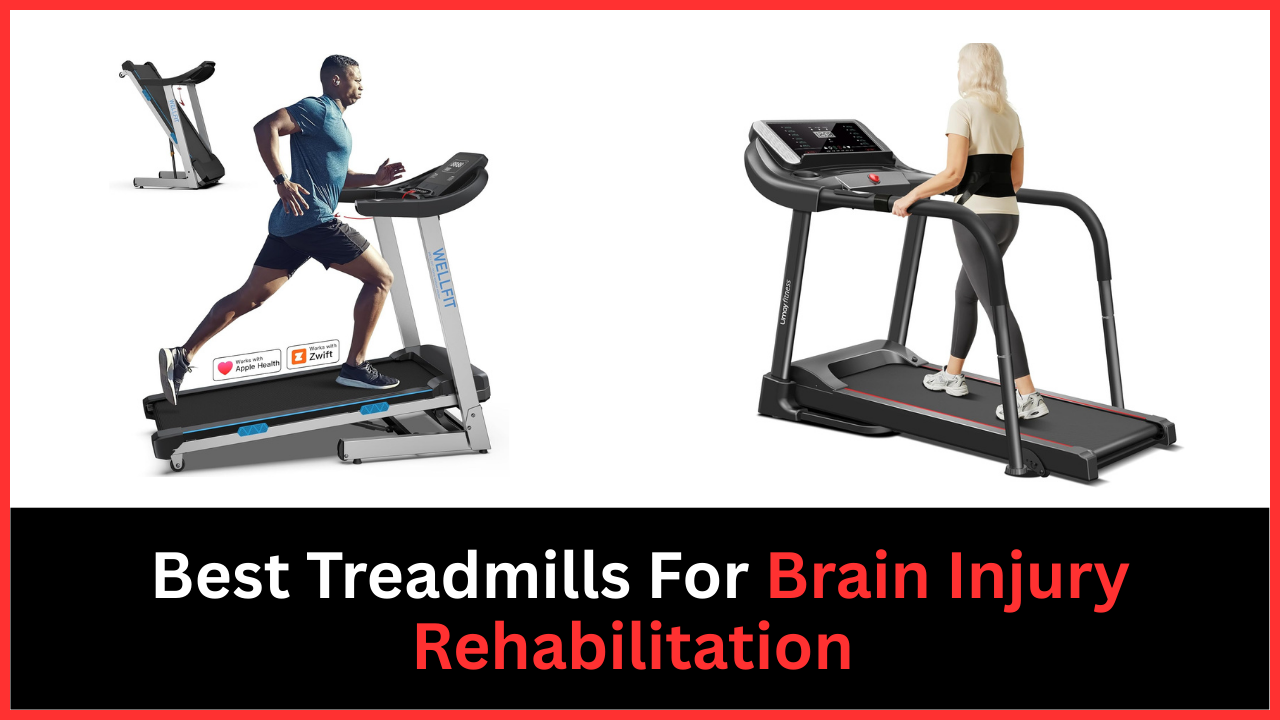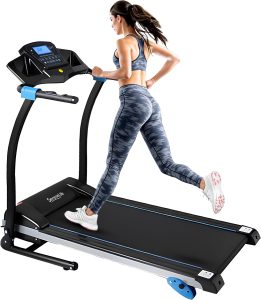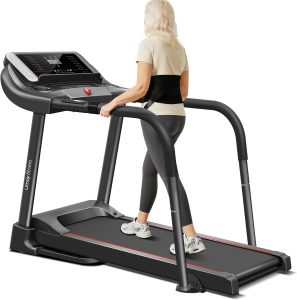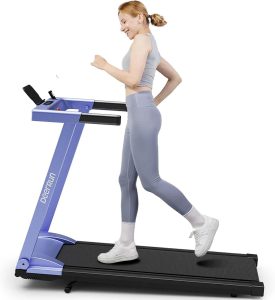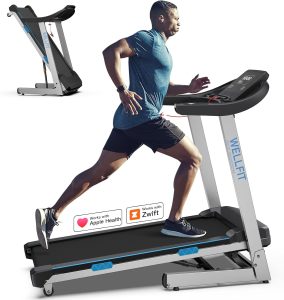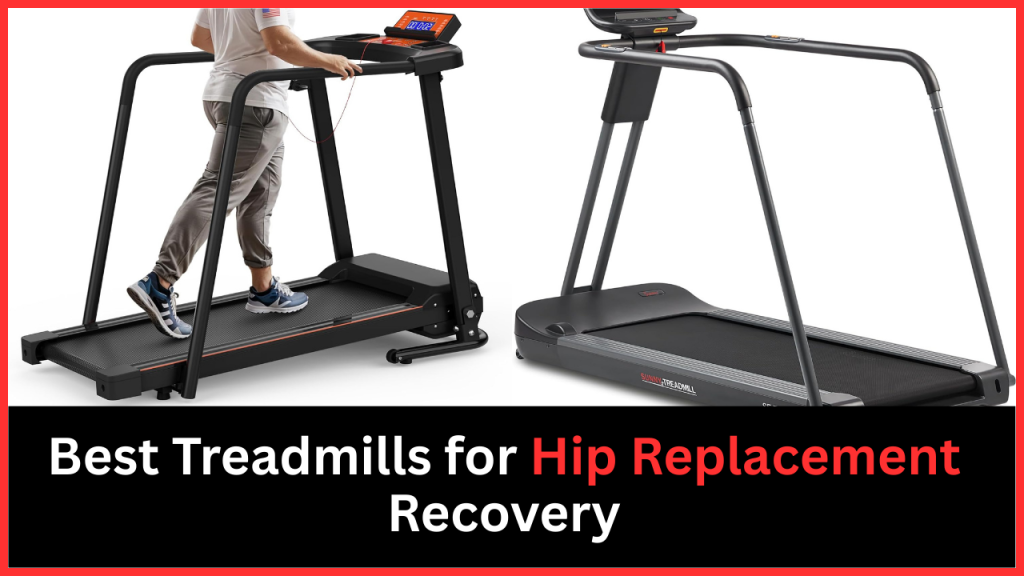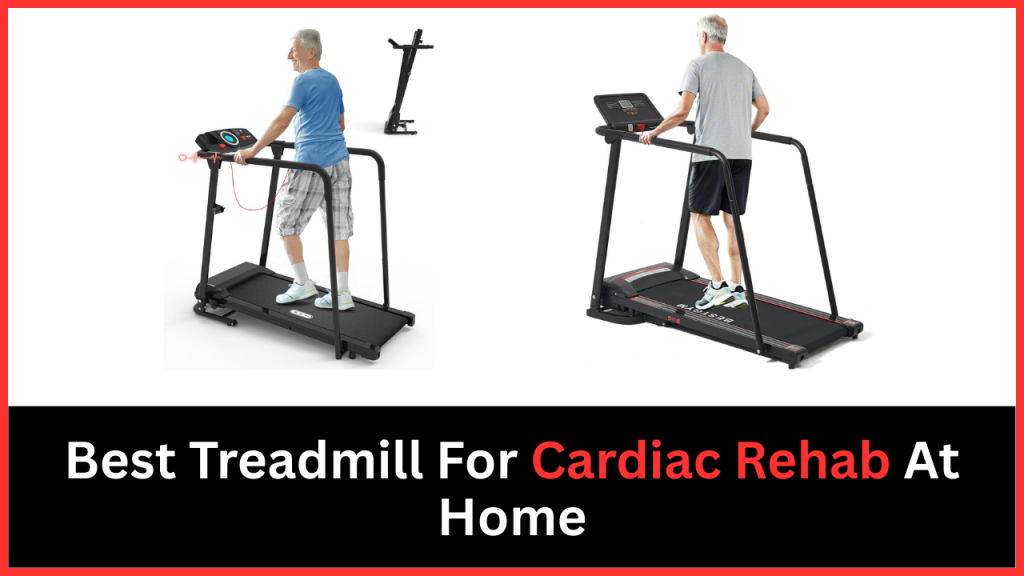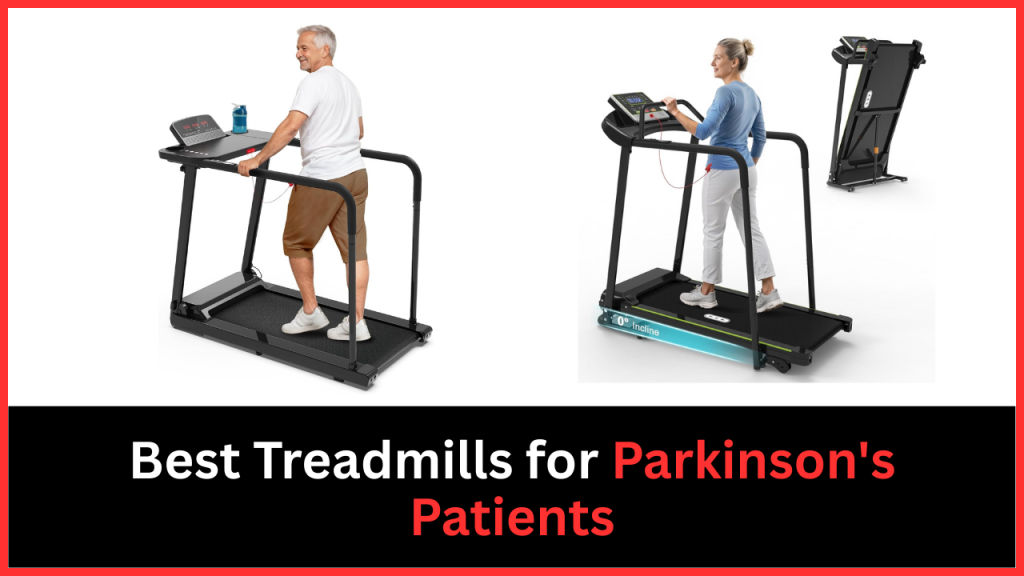Recovering from a brain injury can be a long and difficult journey, but physical activity plays an important role in helping patients regain balance, strength, and confidence. Among the many forms of exercise, treadmills have become a reliable tool in rehabilitation. They provide a controlled, safe, and consistent environment where patients can walk or jog at their own pace.
Choosing the best treadmills for brain injury rehabilitation is not just about speed or performance—it’s about safety, stability, and features that support recovery. In this article, we’ll review the top treadmills that can assist patients in their rehabilitation journey. Each model is designed with features that provide stability, smooth movement, and comfort for safe walking sessions.
List of Best Treadmills for Brain Injury Rehabilitation
Below is our selection of Best Treadmill For Brain Injury Rehabilitation that are particularly helpful for rehabilitation patients. Let’s take a closer look at each treadmill and see why they stand out for rehabilitation.
| SereneLife Electric Folding Treadmill | Check Price |
| UMAY Fitness Home Folding Incline Treadmill with Pulse Sensors | Check Price |
| UMAY Fitness Home Folding Incline Treadmill (L20 Model) | Check Price |
| DeerRun Treadmills for Home with Incline and Handles | Check Price |
| WELLFIT Incline Foldable Treadmills with Handle | Check Price |
1. SereneLife Electric Folding Treadmill
The SereneLife treadmill is a compact yet powerful option for home use. With its foldable design, it saves space, making it suitable for apartments or smaller homes. For rehabilitation purposes, its large walking surface and easy-to-use controls make it an excellent fit for patients. The speed settings allow gradual improvement, which is very important in brain injury recovery.
What makes this treadmill practical for rehabilitation is its sports app connection and preset programs. Patients can start at their own pace while caregivers or therapists monitor progress on the digital display. With heart rate monitoring and incline options, it provides safe variations in training.
Specifications:
- Dimensions: 54.7″D x 26.7″W x 49.6″H
- Maximum speed: 7.5 mph
- Foldable design for easy storage
- 16 preset training programs
- 1.5 HP motor with pulse sensors
2. UMAY Fitness Home Folding Incline Treadmill with Pulse Sensors
The UMAY treadmill focuses on safety, which is one of the most important needs for brain injury rehabilitation patients. The extended, detachable handrails give patients extra support, helping them maintain balance while walking. The treadmill also starts at a very low speed with small increments, making it easier to adjust for gradual progress.
Another highlight is its quiet brushless motor, ensuring smooth operation without distractions. The pulse sensors and BMI calculator provide useful feedback to track recovery progress. Combined with its hydraulic folding system, this treadmill is easy to store and manage at home.
Specifications:
- Dimensions: 56″D x 24.3″W x 43.7″H
- Maximum speed: 8.7 mph
- Detachable full-size handrails
- Hydraulic auto-folding system
- Brushless motor with low noise operation
3. UMAY Fitness Home Folding Incline Treadmill (L20 Model)
This UMAY model offers a 20% incline option, making it more versatile for those who are further along in their recovery. For patients with brain injury rehabilitation, the wide walking deck and smooth motor provide safety and comfort during daily use. It also supports a higher weight capacity, making it reliable for different users in a household.
The treadmill folds down to a very compact size, which is a huge benefit for those with limited space. Its quiet motor and touchscreen controls make it user-friendly, especially for patients who need simple, clear functions during recovery sessions.
Specifications:
- Dimensions: 52″D x 26″W x 6″H
- Maximum speed: 8.7 mph
- 20% incline for varied training
- 400 lb weight capacity
- Quiet brushless motor with long lifespan
4. DeerRun Treadmills for Home with Incline and Handles
The DeerRun treadmill is designed for comfort and safety. Its five-layer anti-slip belt provides a stable walking platform, reducing stress on knees and joints—perfect for patients focusing on slow, steady rehabilitation exercises. The treadmill also features a low-noise motor, so workouts can be done at any time without disturbance.
Another standout feature is the PitPat app, which connects users to a community and allows them to track progress. While this is optional, it can motivate patients and give caregivers better insight into the recovery process. Compact and portable, it’s easy to store after use.
Specifications:
- Dimensions: 56″D x 26″W x 8″H
- Maximum speed: 10 mph
- 3.0 HP quiet motor
- Five-layer anti-slip belt for joint protection
- Supports up to 243 lbs
5. WELLFIT Incline Foldable Treadmills with Handle
The WELLFIT treadmill is one of the most versatile options on the list. With a 15% incline and decline feature, patients can simulate real-world terrain, which is excellent for improving balance and coordination during rehabilitation. It also comes with cushioning technology that reduces impact on joints.
This treadmill stands out with more than 40 workout programs and Bluetooth connectivity. Patients can track progress, connect to apps, or even enjoy guided workouts. Its large running surface and strong weight capacity make it suitable for various rehabilitation needs, whether walking, jogging, or light running.
Specifications:
- Dimensions: 52.24″D x 43.7″W x 8.5″H
- Maximum speed: 8.7 mph
- 15% incline and decline options
- 350 lb weight capacity
- 40+ workout programs with app connectivity
Tips to Use the Treadmill for Brain Injury Rehabilitation
- Start Slow: Begin with the lowest speed and short sessions to avoid fatigue or dizziness.
- Use Handrails: Always hold onto handrails for support until balance improves.
- Stay Supervised: It’s best to have a caregiver or therapist nearby, especially in the early stages.
- Track Progress: Use the built-in monitor to record time, distance, and heart rate. Small improvements build confidence.
- Focus on Consistency: Short but regular sessions are more helpful than occasional long workouts.
Final Words
Finding the best treadmills for brain injury rehabilitation depends on features that prioritize safety, balance, and comfort. Options like extended handrails, low starting speeds, and cushioned walking decks make a big difference for patients in recovery. Models like the SereneLife, UMAY, DeerRun, and WELLFIT treadmills all provide unique benefits for home rehabilitation, offering a reliable way to support physical and mental recovery.

